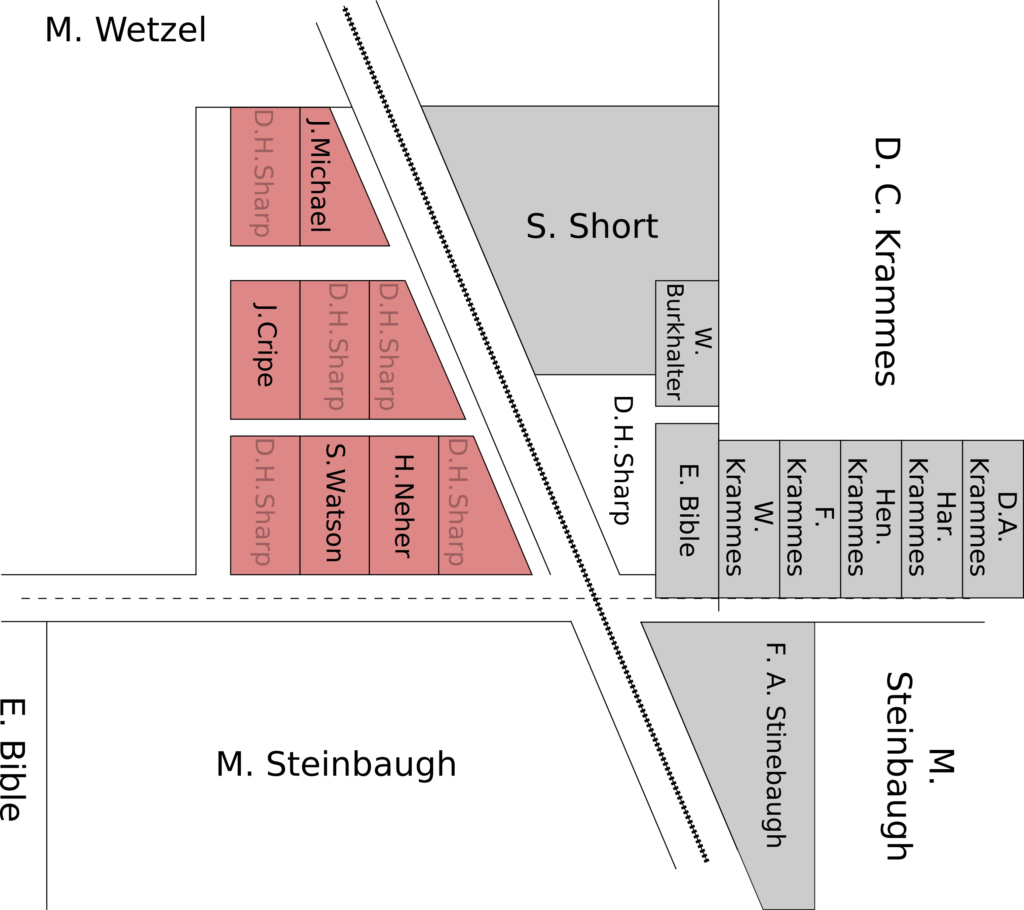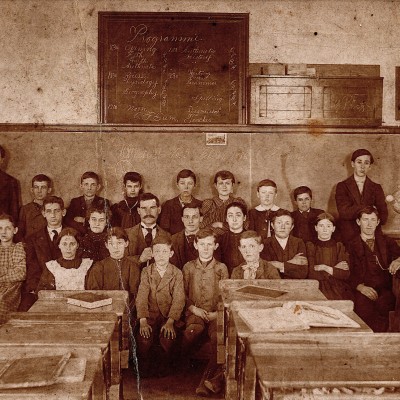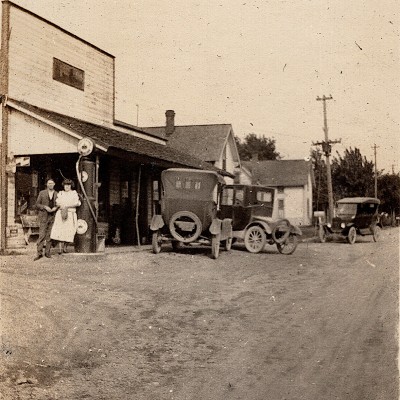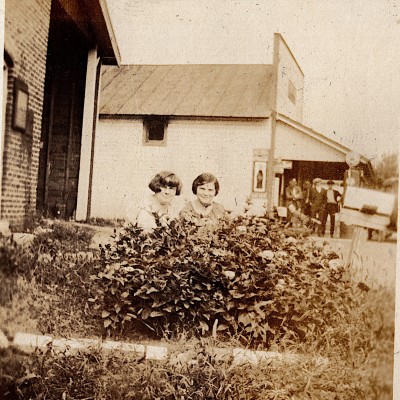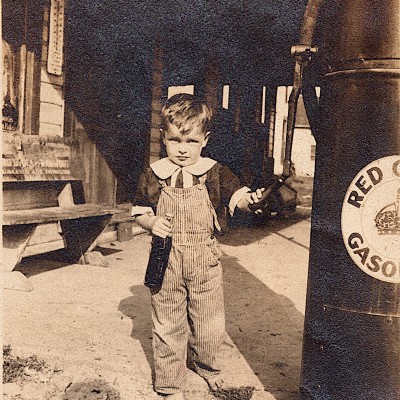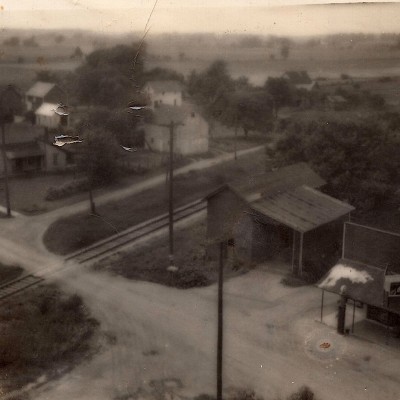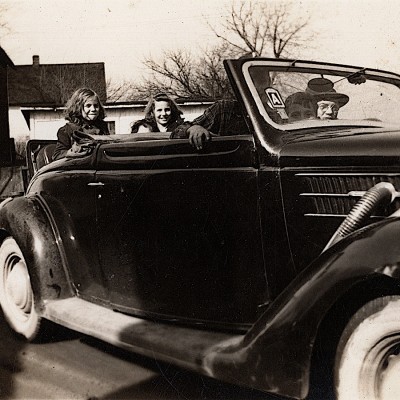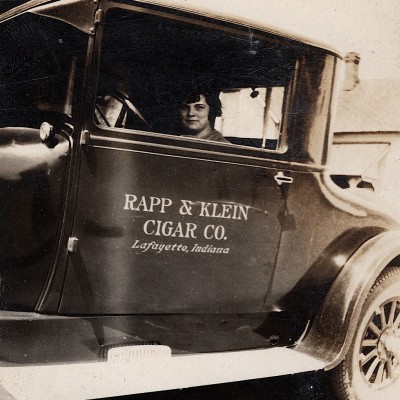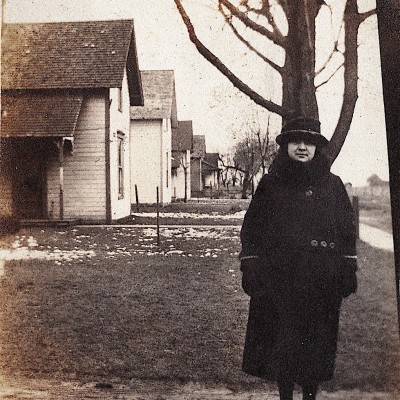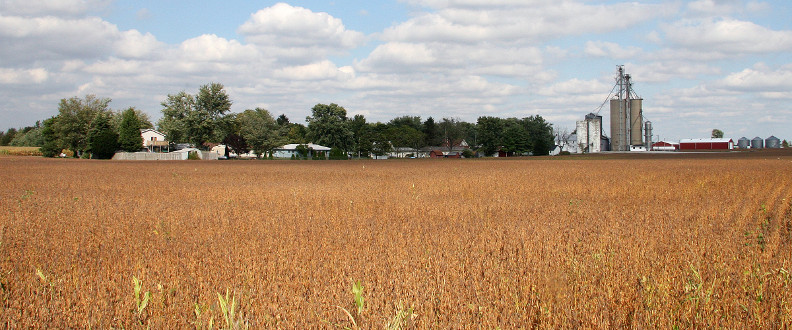
This is part of our planned series of Town Histories where we will gather information and resources on every town in the county. We welcome submissions of information, stories, or photographs to be included on this and other towns. This page, like the project in general, is a work in progress.
Location
The town of Cambria is in Owen township, about halfway between Frankfort and Rossville.
History
The First Five Years
“They have already begun grading for the switch between Rossville and Frankfort, on the farms of Joseph and Abe Michael, near John and Charley Michael’s. The railroad officials have named the town Cabria.[sic] Town lots have been laid out and are for sale cheap. A station at or near this place is much needed as some of the people have from five to six miles to go for their mail.”
– June 06, 1883 Frankfort Weekly Crescent
“The people over in this neighborhood say there must be a little town started at the Cambrie station. They are already making preparations for a depot and warehouse. This is a beautiful site for a village, and as good inducements are offered, there will doubtless be a village there shortly.”
– Sep 26, 1883 Frankfort Weekly Crescent
As late as 1881, the area that would soon become Cambria was nothing more than wilderness and farmland without much to differentiate it from the surrounding areas.[i] But when the Monon railroad (then known as the Louisville, New Albany and Chicago Railway) came through in 1882, connecting Delphi to Frankfort and (in 1883) to Indianapolis, everything changed.[ii]
As mentioned in the first article above, its position with an intersecting road midway between Rossville and Frankfort made it ideal for a small country train depot.[iii] And they wasted no time taking care of the mail situation—in September of 1883, Enoch Bible was made the first postmaster of the Cambria post office before Cambria even existed as a town.[iv]
An Elizabeth Michaels owned all the land where the original lots were laid out, but Daniel H. Sharp, a farmer and carpenter from a German family that had lived nearby for many years, bought it all in February of 1882, except one lot which Michaels kept for herself.[v] He was the one who then made the first plat on March 15, 1885.
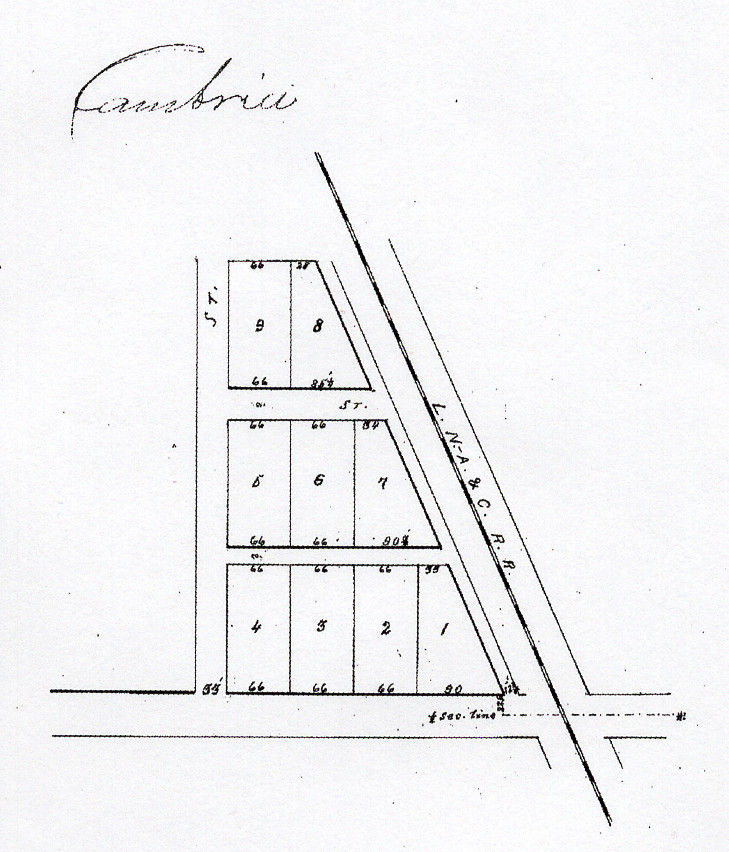
And here is the town as it stood with the first purchasers of those lots in ’85. The red area is the platted town proper and the gray are lots sold that year or the year before outside the plat:
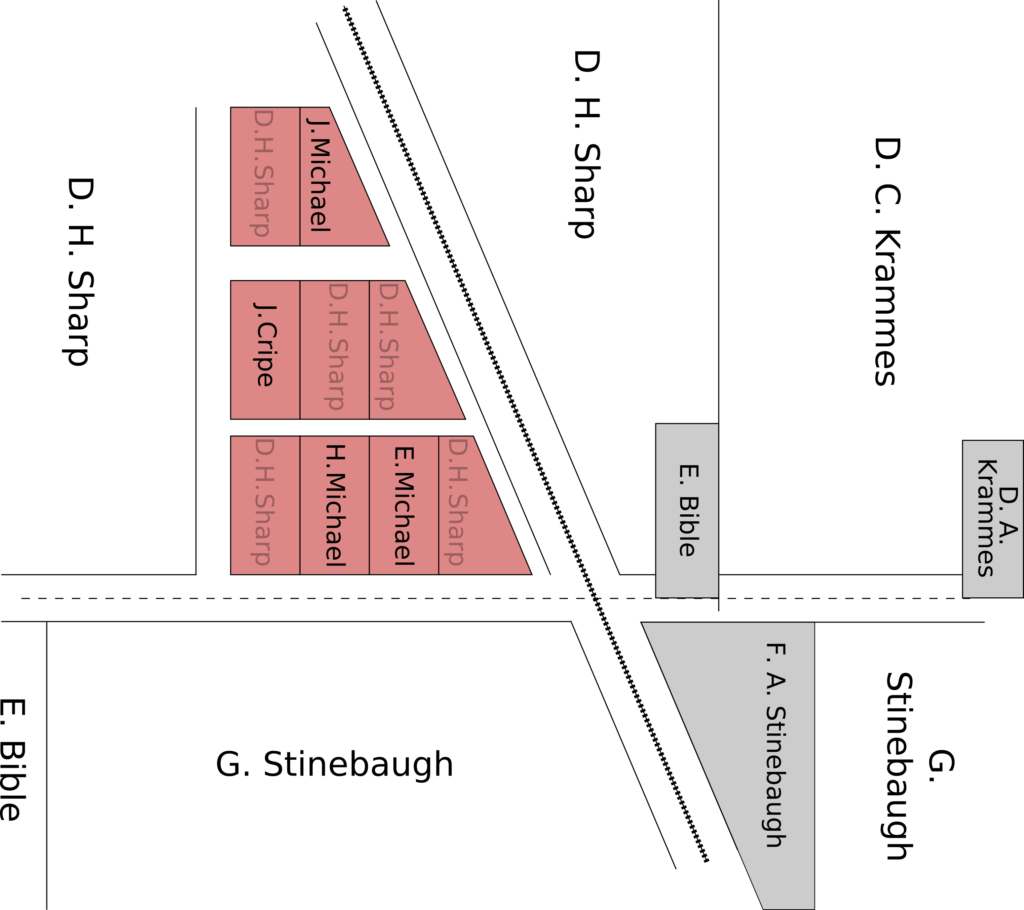
Here we already have evidence of the major early industry of Cambria: stockyards to ship livestock on the railroad. F. A. Stinebaugh was a stockyard man, and that plot of his in the south-east would remain in use as a stockyard for many years to come. The next year, Solomon Short bought a large chunk of land in the north-east and turned it into stockyards too.
This was part of a greater trend in the Midwest, in which growing cities like Chicago (which had just erected the world’s first skyscraper in ’85) extended out railway lines like tree roots seeking water, only they were sucking up all the livestock and crops they could get. This was not just to feed their booming populations, but (for Chicago especially) for the new style of centralized, industrial butchering and meat packing. Ice from Canada paired with the fast, reliable transportation of the expanding network of railways meant that cattle in Cambria could be hauled to Chicago, butchered, packed, and shipped out east to be eaten as far away as New York City.[vi] This was unimaginable just a generation prior. The way the world ate was changing, and it was this, as much as anything, that created Cambria.[vii]

You will also note that our postmaster, Enoch Bible, has purchased a lot closer to town. It appears he opened a store/post office here, which would pass through multiple hands (and burn down multiple times) but remain a general store all the way up through the 1980s, ending with the Gum store.[viii] Here is where it started.
Fast forward just a few years to 1888, and we have what looks like an actual town:
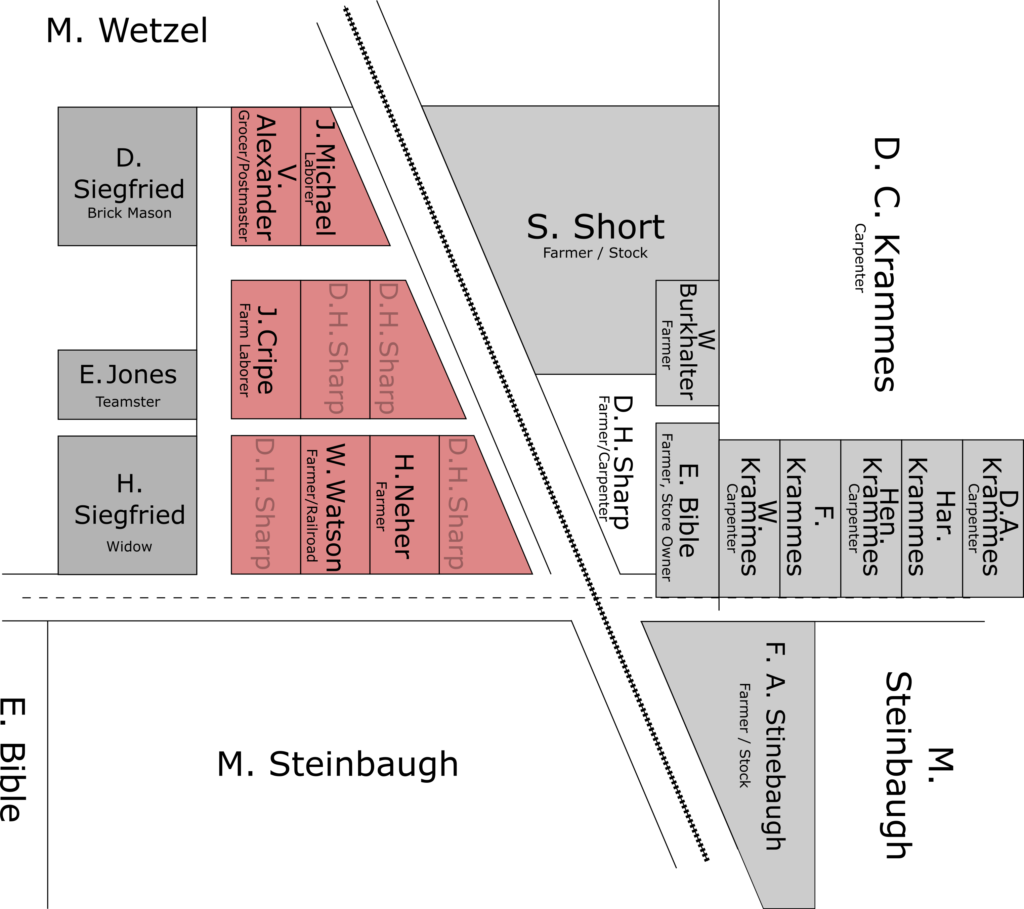
There are still a few unsold lots, but that’s balanced out by D.C. Krammes giving his brood of carpenters each a slice of land on which to build their homes. (A century later, my father, Kip Sloan, would still know this section of town as “Krammesville” even though there was no one by that name around anymore.)
There is now a new postmaster, Vale Alexander, who is also listed on the census as a grocer, so I take this to mean that he runs a post office out of a store in that lot on the north side of town. If so, that makes two out of the three grocery stores Cambria will eventually have (according to family records).[ix] We now have a teamster, brick mason, railroad worker, general laborers, and even a widow.
Click through the slideshow below to see Cambria grow year by year.
Check back later for more…
There is lots more to come, including fiddling contests, multicounty football tournaments, grain elevators, train wrecks, chicken thieves, horse thief detectives, the rise and fall of the Cambria school, and whatever else I discover or others comment.
Recommended Readings
The History of Cambria by Edith Gum Cheesman
Monon Railroad Bygone Places – Rossville & Cambria
Fiddling and Football: Rivalry Between Carroll County and Cambria, 1901-1902
Schools
Cambria School – Information to be gathered.
Churches
Progressive Church – dedicated 1912
Others – Information to be gathered
Businesses
Bible store/post office, later Gum store/post office
Vale store/post office ?
Blacksmith Shop
Burkhalter Garage
Barbershops
Sharp Elevator
Co-op Elevator, later Mohler Elevator
Brick factory
Buggy factory
Mohler Farms
Individuals
Russell G. Siegfried – Purdue professor, musical director, Rossville teacher
Images
Click any image in the gallery to view it and its description (if any). After it pops up, you can click the blue left/right arrows beneath it to page through the photos, or (if available) the green down-sloping arrow to view the picture at full size.
Sources
[i] See 1878 Combination Atlas Map of Clinton County, Clinton County property records
[ii] https://monon.org/timeline.php
[iii] The road bisecting section 8/Cambria east to west is marked on the 1878 atlas but not on the 1865.
[iv] Ancestry.com. U.S., Appointments of U. S. Postmasters, 1832-1971 [database on-line]. Provo, UT, USA: Ancestry.com Operations, Inc., 2010. This collection was indexed by Ancestry World Archives Project contributors. Original data: Record of Appointment of Postmasters, 1832-1971. NARA Microfilm Publication, M841, 145 rolls. Records of the Post Office Department, Record Group Number 28. Washington, D.C.: National Archives.
[v] Occupations taken from U.S. Census, the rest from Clinton County property records
[vi] Delphi Journal Sep 12 1901, pg 8 article on cattle sold to NYC through Cambria
[vii] Most of this paragraph is based on the terrific book Nature’s Metropolis: Chicago and the Great West by William Cronon.
[viii] See “Clinton County, Indiana Histories and Families” edited by Randy W. Baumgardner, pg. 49. “The [Bible] family moved to Owen Twp. After 1880 and settled on a farm on the western edge of Cambria. In addition to farming, Enoch owned a grocery store and was the postmaster for the village.”







